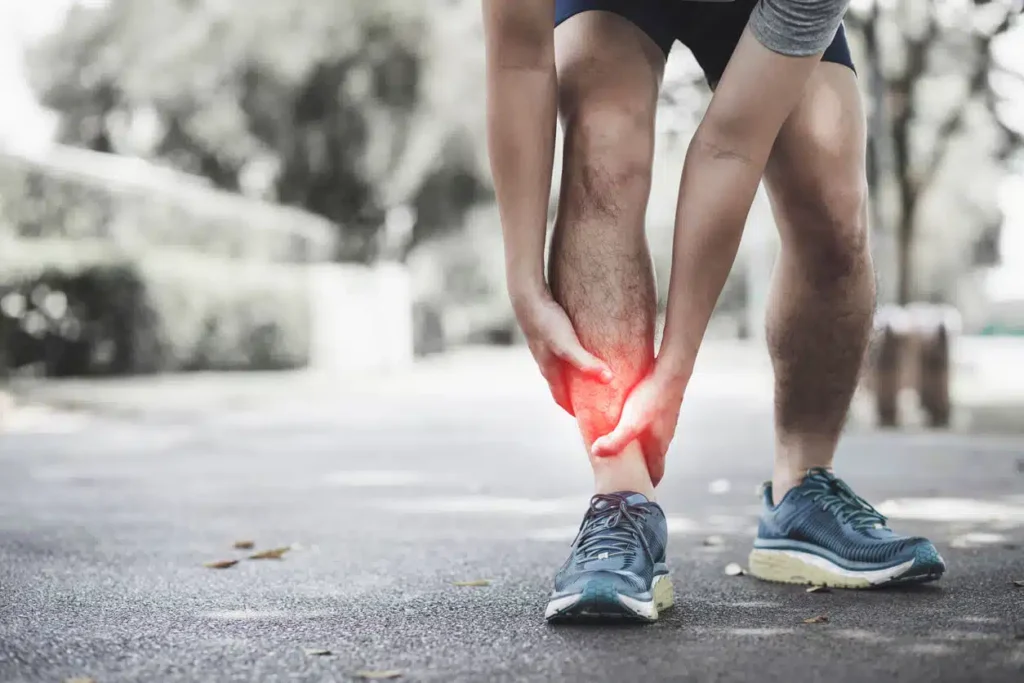Running is a fantastic way to stay fit, clear your mind, and enjoy the great outdoors. However, it’s not without its risks. Many runners have experienced the frustration of being sidelined by running injuries. Whether you’re new to running or a seasoned marathoner, preventing injuries should be a top priority. Let’s dive into the most common injuries and how you can avoid them, with a special focus on senior runners.

What Constitutes a Running Injury?
Running injuries are ailments that result from the physical stress and strain of running. They can be acute, like a sprained ankle, or chronic, such as shin splints. These injuries often stem from overuse, improper technique, or inadequate preparation.
Most Common Runner Injuries
Plantar Fasciitis
Plantar fasciitis is a common foot injury that affects the heel and bottom of the foot. It usually starts as a dull pain that worsens with activity.
- Symptoms: Sharp heel pain, especially in the morning.
- Causes: Overuse, flat feet, or high arches.
- Prevention: Stretch your calves and feet regularly, wear supportive shoes, and avoid running on hard surfaces.
Shin Splints
Shin splints are characterized by pain along the shin bone. This pain can be severe enough to halt your running routine.
- Symptoms: Tenderness or pain along the inner side of the shinbone.
- Causes: Running on hard surfaces, improper shoes, or increasing mileage too quickly.
- Prevention: Gradually increase your running distance, ensure proper footwear, and incorporate strength training for your legs.
Runner’s Knee (Patellofemoral Pain Syndrome)
Runner’s knee refers to pain around the kneecap, often caused by the repetitive stress of running.
- Symptoms: Pain behind or around the kneecap, especially when bending the knee.
- Causes: Overuse, misalignment of the kneecap, or muscle imbalances.
- Prevention: Strengthen your quadriceps, ensure proper running form, and avoid downhill running.
Achilles Tendonitis
Achilles tendonitis is an overuse injury of the Achilles tendon, which connects the calf muscles to the heel bone.
- Symptoms: Pain and stiffness along the Achilles tendon.
- Causes: Overuse, tight calf muscles, or sudden increases in training intensity.
- Prevention: Stretch your calves, avoid sudden increases in training, and strengthen your lower leg muscles.
IT Band Syndrome
IT band syndrome occurs when the iliotibial band, which runs along the outside of the thigh, becomes tight or inflamed.
- Symptoms: Pain on the outer side of the knee.
- Causes: Overuse, downhill running, or weak hip muscles.
- Prevention: Strengthen your hips, foam roll your IT band, and avoid excessive downhill running.
General Preventative Measures
Preventing running injuries requires a holistic approach. Here’s how to keep yourself on track:
- Warm-up and Cool-down: Always warm up before running and cool down afterward to prepare and relax your muscles.
- Cross-training: Incorporate different forms of exercise like cycling or swimming to reduce repetitive strain.
- Balanced Diet and Hydration: Maintain a nutritious diet and stay hydrated to support muscle function and recovery.

Common Runner Injuries for Seniors
Specific Challenges for Senior Runners
As we age, our bodies undergo changes that can increase the risk of injuries. Senior runners need to be particularly vigilant about injury prevention due to decreased bone density, muscle mass, and flexibility.
Injuries More Prevalent in Senior Runners
Osteoarthritis
Osteoarthritis is a common condition among senior runners, characterized by the breakdown of joint cartilage.
- Symptoms: Joint pain, stiffness, and swelling.
- Causes: Wear and tear of the joints over time.
- Prevention: Engage in low-impact exercises, maintain a healthy weight, and perform regular joint-friendly workouts.
Stress Fractures
Stress fractures are tiny cracks in the bone caused by repetitive force, often from overuse.
- Symptoms: Localized pain that worsens with activity.
- Causes: Increased activity levels, inadequate rest, or poor nutrition.
- Prevention: Ensure adequate calcium and vitamin D intake, incorporate rest days, and wear appropriate shoes.
Hamstring Injuries
Hamstring injuries involve strains or tears in the hamstring muscles at the back of the thigh.
- Symptoms: Sudden pain in the back of the thigh, swelling, or bruising.
- Causes: Overstretching or sudden movements.
- Prevention: Regularly stretch and strengthen the hamstrings, and avoid sudden bursts of speed.
Tailored Preventative Strategies for Seniors
Senior runners should adapt their routines to their changing bodies:
- Regular Medical Check-ups: Monitor your health and address any concerns early.
- Adapting Training Programs: Modify intensity and duration to match your current fitness level.
- Supportive Gear and Footwear: Use equipment that provides stability and support.
- Flexibility and Strength Training: Prioritize exercises that improve flexibility and strength to prevent injuries.
Conclusion
Preventing running injuries is crucial for maintaining a healthy and enjoyable running routine. Remember, just like you wouldn’t dive into a marathon without training, don’t skip the small steps that prevent injuries. Whether it’s proper warm-ups, stretching, or wearing the right shoes, every little bit helps. For senior runners, adapting your routine to your body’s needs can keep you running for years to come. So lace up, take care of your body, and hit the road with confidence.
We recommend that you read The Truth About Somatic Exercise for Weight Loss & Preventing Blisters During Runs: Your Ultimate Guide
